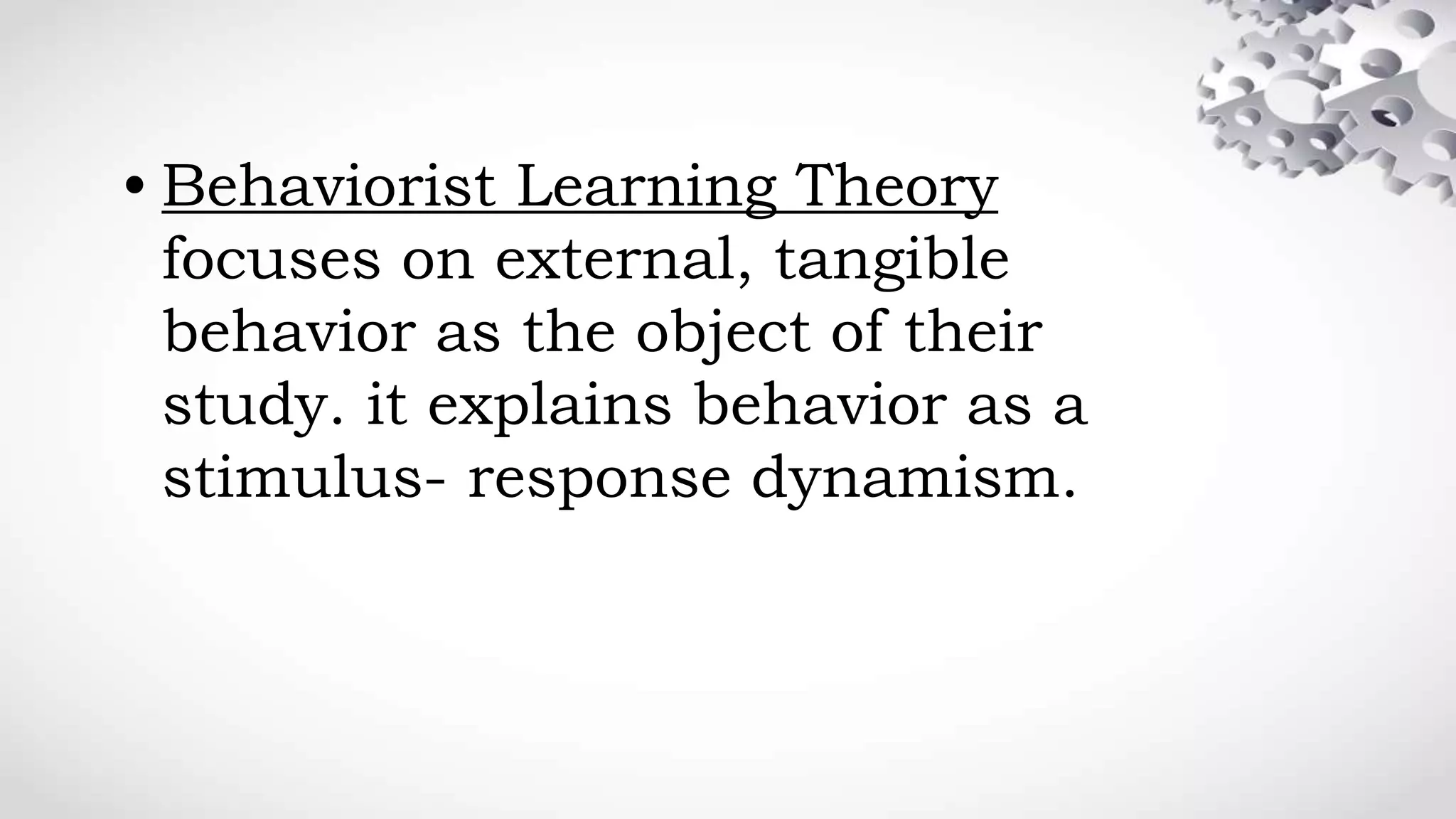The document discusses behaviorism, a theory of learning emphasizing that behaviors are learned through environmental interactions via conditioning. Key figures include Ivan Pavlov, who introduced classical conditioning, John B. Watson, who focused on observable behavior and child development, and B.F. Skinner, who refined operant conditioning by introducing the concept of reinforcement. The text outlines fundamental principles such as the law of effect and types of responses, highlighting the role of reinforcement and punishment in shaping behaviors.



































